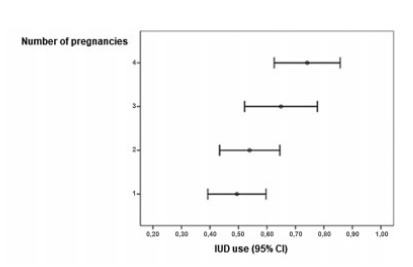Summary
Revista Brasileira de Ginecologia e Obstetrícia. 2022;44(8):761-770
The study aimed to characterize the clinical, histological, and immunohistochemical profile of women with invasive breast cancer, according to the risk for Hereditary Predisposition Breast and Ovarian Cancer Syndrome in a Brazilian population.
This is a retrospective study performed from a hospital-based cohort of 522 women, diagnosed with breast cancer treated at an oncology referral center in the Southeast region of Brazil, between 2014 and 2016.
Among the 430 women diagnosed with invasive breast cancer who composed the study population, 127 (29.5%) were classified as at increased risk for hereditary predisposition to breast and ovarian cancer syndrome. There was a lower level of education in patients at increased risk (34.6%) when compared with those at usual risk (46.0%). Regarding tumor characteristics, women at increased risk had higher percentages of the disease diagnosed at an advanced stage (32.3%), and with tumors > 2cm (63.0%), with increased prevalence for both characteristics, when compared with those at usual risk. Furthermore, we found higher percentages of HG3 (43.3%) and Ki-67 ≥ 25% (64.6%) in women at increased risk, with prevalence being about twice as high in this group. The presence of triple-negative tumors was observed as 25.2% in women at increased risk and 6.0% in women at usual risk, with the prevalence of absence of biomarkers being 2.5 times higher among women in the increased risk group.
From the clinical criteria routinely used in the diagnosis of breast cancer, the care practice of genetic counseling for patients at increased risk of hereditary breast cancer in contexts such as Brazil is still scarce.

Summary
Revista Brasileira de Ginecologia e Obstetrícia. 2022;44(5):497-502
Construction and validation of the WhatsApp Stress Scale (WASS), a questionnaire designed for physicians that measures how the use of smartphones and related software communication applications affects the quality of life of gynecologists who use this tool to communicate with patients.
The present cross-sectional observational study analyzed 60 gynecologists according to weekly WhatsApp usage time for communication with patients and compared the data with the perception of the doctor on the use of this virtual interaction as a stressor. Physicians were equally divided into three groups:<2hours, 2 to 5 hours, and>5 hours. The authors created a questionnaire in Likert scale format. The study proceeded in three phases: development of the questionnaire items, pretesting, constructing, and validity and reliability testing using factor analysis, Cronbach α coefficient, and paired t-test.
A 9-item instrument using a 5-point Likert scale was created and administered to the participants in 3 different times: T0, T1 (15minutes after the end of T0), and T2 (15 days later). All questionnaire items possessed adequate content validity indices and the internal consistency of the instrument was satisfactory (Cronbach α 0.935; 95% confidence interval [CI]: 0.744-0.989; p=0.0001). No statistically significant differences were observed in the responses between the rounds of testing, indicating good test-retest reliability. A positive association between the high frequency of WhatsApp usage for communication with patients and the stress perceived by the doctor was shown.
The WASS is a valid and reliable instrument for assessing the use of messaging applications to communicate with patients as a stressor perceived by gynecologists.
Summary
Revista Brasileira de Ginecologia e Obstetrícia. 2022;44(5):458-466
Hyperemesis gravidarum (HG) is a pregnancy complication that can progress with persistent nausea and vomiting. The aim of the present study is to evaluate the relationship between hematological parameters and HG.
A total of 532 pregnant women with HG who were admitted to the Department of Obstetrics and Gynecology between March 2019 and February 2021, and 534 healthy pregnant women with characteristics similar to those of the case group were included in the study. The hematological parameters of both groups were compared. In addition, the hematological parametersof patients with HG according to the severity of ketonuria were compared.
Themean age of the HG group (n=532) was 26.3 ± 4.1 years, and that of the control group (n=534) was 25.9 ± 4.8 years. Among patients with HG, 46% (n=249) had ketone(+), 33% (n=174), ketone(++), and 21% (n=109), ketone(+++). The neutrophil-to-lymphocyte ratio (NLR) and platelet-to-lymphocyte ratio (PLR) were higher in the HG group than in the control group: 3.8 (2.8-5.8)/3.2 (2.6-4.0); p<0.001; and 135.2 ± 30.4/108.9 ± 62.2; p<0.001 respectively. The neutrophil count, NLR, and PLR were higher in the group with ketone(+++) than in the groups with ketone(+) or ketone(++): 7.6 ± 1.9/5.5 ± 2.4; p<0.001; 3.8(2.8-4.6)/2.9(2.3- 3.6); p<0.001; and 149.9 ± 48.0/135.9 ± 65.7; p<0.001 respectively. The mean corpuscular hemoglobin (MCH) level, the NLR, and the PLR were identified as independent predictors of the presence of HG and the level of ketone positivity in HG patients.
The NLR and PLR were high in patients with HG, suggesting the its inflammatory activity. They may be important markers associated with the presence and severity of HG.
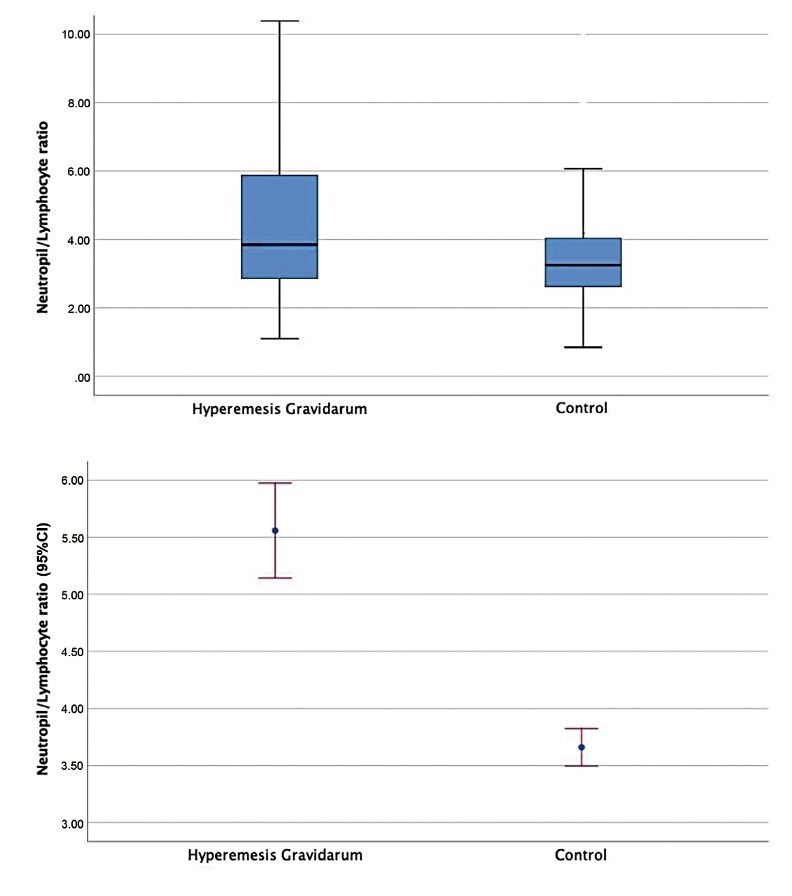
Summary
Revista Brasileira de Ginecologia e Obstetrícia. 2022;44(2):91-99
To investigate the dietary total antioxidant capacity (DTAC) of pregnant women, and associated factors.
Cross-sectional study conducted with 785 pregnant adult women attended in primary health care centers of Ribeirão Preto, state of São Paulo, Brazil. Two 24-hour dietary recalls were obtained, and the usual intake was estimated through the Multiple Source Method. The DTAC was estimated using the ferric reducing antioxidant power assay. The relationship between the higher DTAC estimate (≥ median of 4.3 mmol/day) and associated factorswas investigated usingadjusted logisticmodels with backward selection.
In total, 25% of the pregnant women were classified as overweight, and 32% as obese. Themedian (P25, P75)DTAC was 4.3 (3.3-5.6)mmol/day. Through adjusted logistic regression models with backward selection, a higher chance of DTAC estimates above the median among pregnant womenaged ≥ 35 years old (2.01 [1.24-3.27])was verified when compared with younger pregnant women. Women with prepregnancy overweight (0.63 [0.45-0.89]) and obesity (0.59 [0.40-0.88]) presented a lower chance of DTAC estimates above the median when compared with eutrophic pregnant women. A higher DTAC estimate was positively associated with the use of dietary supplements (1.39 [1.03-1.88]), and negatively associated with total dietary energy (0.59 [0.42-0.85]).
The DTAC estimate over the median was associated with greater age, adequate body weight, use of dietary supplements, and lower energy intake.

Summary
Revista Brasileira de Ginecologia e Obstetrícia. 2022;44(2):178-186
To determine the accuracy of colposcopy findings in diagnosing cervical intraepithelial neoplasia (CIN) in women with an atypical squamous cells, cannot exclude high-grade squamous intraepithelial lesion (ASC-H) pap smear result and analyze whether the prevalence of HSIL and cancer correlates with sociodemographic risk factors and specific colposcopic findings.
Colposcopic findings and sociodemographic risk factors were analyzed as possible predictors of a CIN 2 or worse diagnosis in women with an ASC-H pap smear result.
Accuracy of the colposcopic impression was 92%, sensitivity was 91.6%, and specificity was 93.1%, with a positive predictive value of 96.4% and negative predictive value of 84.3%. Diagnosis of CIN 2 or worse was more frequent in patients with a previous history of cervical dysplasia and pre-menopausal patients. Identification of major colposcopic findings, dense acetowhite epithelium, coarse mosaicism, and punctuation correlated significantly with CIN 2 or worse.
Colposcopy performed by an experienced examiner can accurately differentiate patients with CIN 1 or less from patients with CIN 2 or worse. Diagnosis of CIN 2 or worse was more frequent in patients with a previous history of cervical dysplasia and pre-menopausal patients. The degree of acetowhite changes was the best colposcopic feature to predict CIN2 or worse.
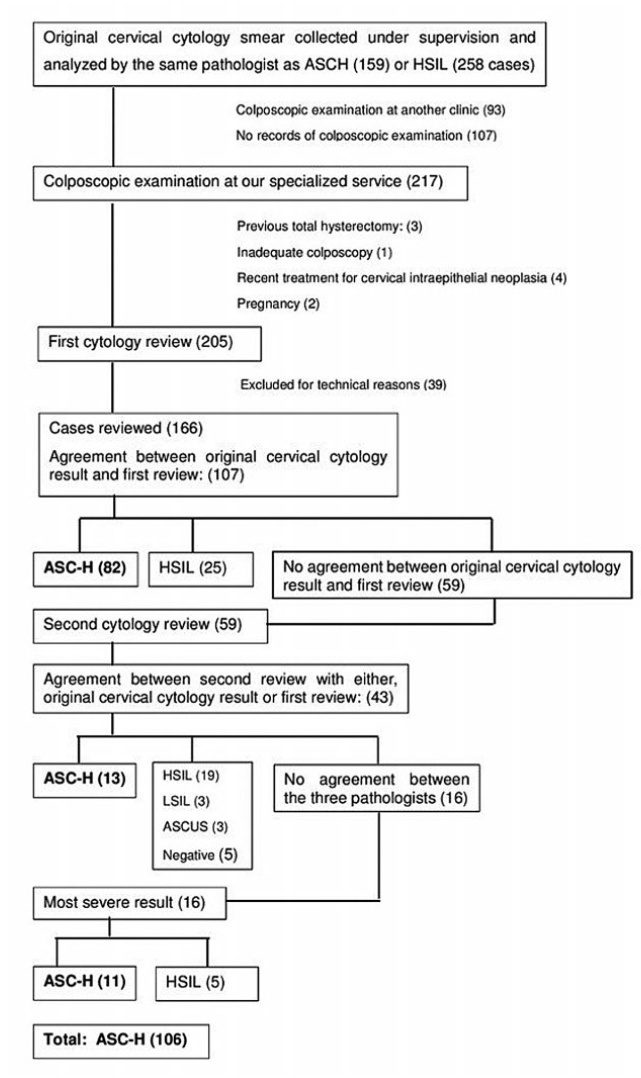
Summary
Revista Brasileira de Ginecologia e Obstetrícia. 2022;44(2):169-177
To evaluate genital hygiene among women with and without bacterial vaginosis (BV) and/or vulvovaginal candidiasis (VVC).
A cross-sectional study of reproductive-aged women who underwent gynecological and laboratory tests and fulfilled a genital hygiene questionnaire.
This study evaluated 166 healthy controls and 141 women diagnosed with either BV (n=72), VVC (n=61), or both (n=8). The use of intimate soap and moist wipes after urination was more frequent among healthy women (p=0.042 and 0.032, respectively). Compared to controls, bactericidal soap was more used by women with BV (p=0.05).
Some hygiene habits were associated to BV and/or VVC. Clinical trials should address this important issue in women’s health.
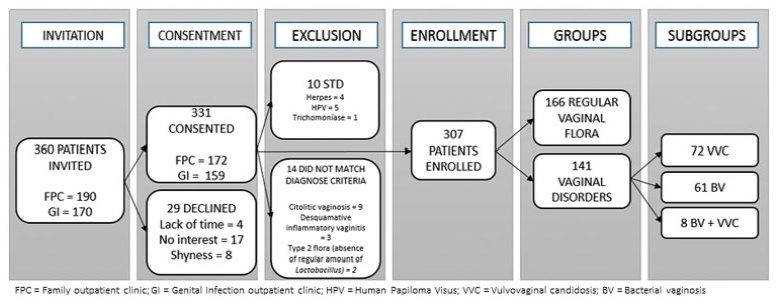
Summary
Revista Brasileira de Ginecologia e Obstetrícia. 2022;44(2):161-168
Premature ovarian insufficiency (POI) contributes significantly to female infertility. Cyclophosphamide (CYC has adverse effects on folliculogenesis. Platelet-rich plasma (PRP) is an autologous product rich in many growth factors. We evaluated the protective effect of PRP on in vitro fertilization in female rats with CYC-induced ovarian damage.
Twenty-eight adult female Sprague-Dawley rats were randomly divided into four groups. Group 1 (control-sodium chloride 0.9%; 1 mL/kg, single-dose intraperitoneal [IP] injection); group 2 (CYC), 75mg/kg, single-dose IP injection and sodium chloride 0.9% (1mL/kg, single-dose IP injection); group 3 CYC plus PRP, CYC (75 mg/kg, single-dose and PRP (200 μl, single-dose) IP injection); and group 4 (PRP, 200 μl, singledose IP injection).
In the comparisons in terms of M1 and M2 oocytes, it was observed that the CYC group presented a significantly lower amount than the control, CYC/PRP, and PRP groups. (for M1, p=0.000, p=0.029, p=0.025; for M2, p=0.009, p=0.004, p=0.000, respectively). The number of fertilized oocytes and two-celled good quality embryos was found to be statistically significant between the CYC and control groups, CYC+PRP and PRP groups (p=0.009, p=0.001, p=0.000 for oocytes, respectively. For embryos; p=0.016, p=0.002, p=0.000).
Platelet-rich plasma can protect the ovarian function against damage caused by CYC, and, in addition, it improves oocyte count and the development of embryos as a result of oocyte stimulation during the IVF procedure.
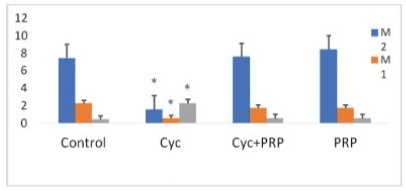
Summary
Revista Brasileira de Ginecologia e Obstetrícia. 2022;44(2):154-160
To analyze the profiles of women who accepted and who refused the insertion of the copper intrauterine device (IUD) postpartum and to learn the motivations related to the refusal of the method.
Cross-sectional study with 299 pregnant women. The women were informed about the possibility of inserting a copper IUD postpartum and were questioned about their interest in adopting or not this contraceptive. All participants answered a questionnaire with information relevant to the proposals of the present study. The sample size was limited to the number of devices available for the present study.
A total of 560 women were invited to join the present study and 299 accepted. Out of the 299 women included in the present study, 175 accepted the copper IUD and 124 refused. As the number of pregnancies increased, the IUD acceptance rate raised (p=0.002), especially between the groups with 1 and with ≥ 4 pregnancies (p=0.013). Regarding the desire to havemore children, the women who planned to have more children were more likely to refuse the method than the ones who did not (p<0,001).
Women with multiple pregnancies and desire to not have more children were more likely to accept the copper IUD. The profile of those who refused was first pregnancy and desire to have more children. Among the three most frequent reasons reported for copper IUD rejection, two responses stood out: no specific justification and desire to have more children.
